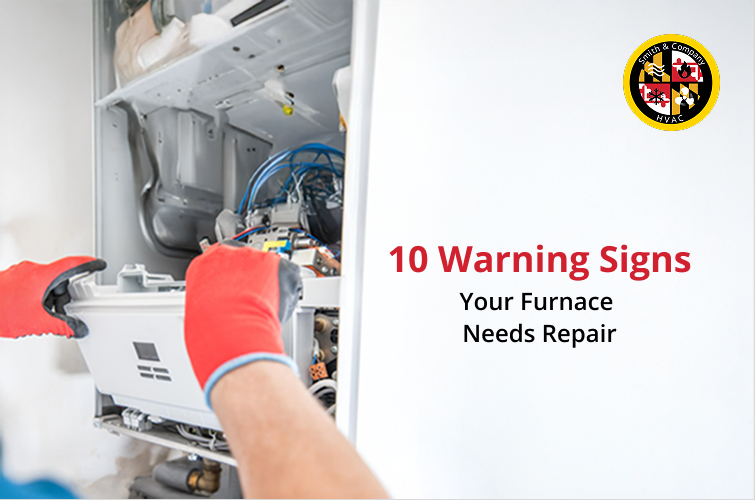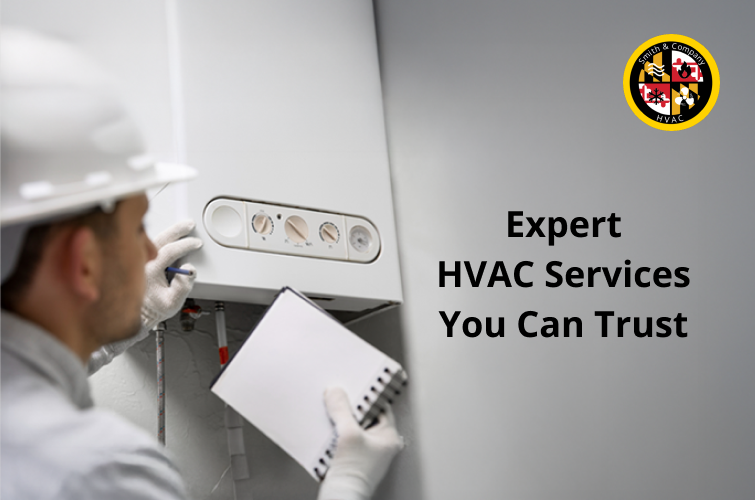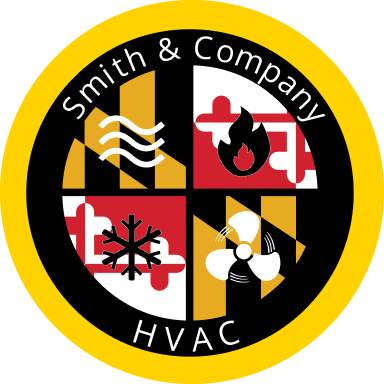
When the temperatures drop, your heating system becomes the heart of your home’s comfort. The last thing you want is to discover a problem on the coldest night of the year. Like all mechanical systems, furnaces and heaters show signs of trouble before they fail. By paying attention to these warning signals, you can arrange repairs early, avoid emergencies, and keep your home safe and warm.
10 Signs Why Your Heating System Needs Attention
In this blog, we’ll explore the key signs that your heating system may need repair before winter, so you know when to call for reliable heating services from a trusted HVAC company. If you notice these signs, it is time that you pay attention to your system.
1. Uneven Heating Across Rooms
One of the first signs that your heating system needs attention is uneven heating. If some rooms feel warm while others remain chilly, it could mean:
- Blocked or leaky ductwork
- A failing blower motor
- Poor airflow from clogged filters
Uneven heating is not just inconvenient; it forces your system to work harder, which increases energy use and wear on the equipment.
2. Strange Noises During Operation
Your heating system should run relatively quietly. If you notice banging, clanking, screeching, or rattling noises, it’s a clear signal that something is wrong.
- Banging may indicate ignition delays.
- Screeching can mean worn-out belts or bearings.
- Rattling could point to loose parts inside the furnace.
Ignoring these noises may lead to costly repairs. A technician can diagnose and resolve the issue before it escalates.
3. Rising Energy Bills Without Explanation
If your heating bills climb sharply even though your usage hasn’t changed, your system may not be running efficiently. Issues such as clogged filters, dirty burners, or worn components force your system to work harder to deliver the same level of heat. Routine HVAC services can address these inefficiencies and restore optimal performance.
4. Short Cycling or Constant Running
Short cycling occurs when your furnace turns on and off too frequently. This often happens due to thermostat problems, restricted airflow, or overheated parts. On the other hand, if your system runs nonstop without reaching the desired temperature, there may be an issue with the blower motor, heat exchanger, or thermostat calibration. Both problems can cause significant wear if left unchecked.
5. Unusual Odors When the Furnace Runs
While it’s normal to smell a slight burning odor when you turn on the furnace for the first time in the season, persistent or unusual odors are concerning:
- Musty smells may indicate mold in ductwork.
- Burning odors could point to electrical issues.
- Gas odors (sulfur or rotten egg smell) are an emergency and require immediate professional help.
Unusual odors should never be ignored, as they may signal safety hazards.
6. Yellow or Flickering Pilot Light
For gas furnaces, the pilot light is an important safety indicator. A healthy flame should be steady and blue. If you see a yellow or flickering flame, it could mean incomplete combustion, often caused by carbon monoxide leaks. This is a serious safety issue that needs urgent attention from an HVAC professional.
7. Poor Airflow and Weak Warm Air
If you notice weak airflow from your vents or the air coming out isn’t warm enough, the issue may be with the blower fan, ductwork, or heat exchanger. Poor airflow reduces comfort and strains your system, making repairs more likely if the problem isn’t resolved.
8. Frequent Thermostat Adjustments
If you constantly find yourself adjusting the thermostat to stay comfortable, your heating system may be struggling. This could point to a failing thermostat, aging equipment, or inefficiencies that require professional repair.
9. Excessive Dust or Dry Air in Your Home
Your heating system affects more than just temperature. If you notice more dust around your home or experience dry skin and irritated sinuses, your furnace may not be filtering or humidifying air properly. A repair or maintenance service can restore indoor air quality.
10. Age of the Heating System
Finally, consider the age of your unit. Most furnaces last 15–20 years with proper maintenance. If your system is nearing that age and showing any of the above signs, repairs may be needed now, and replacement may not be far away.
Why Timely Repairs Matter
Delaying repairs can lead to bigger problems and higher costs down the line. Timely attention:
- Prevents emergency breakdowns in freezing weather
- Improves efficiency and lowers energy bills
- Extends the lifespan of your heating system
- Protects your family’s comfort and safety
Why Choose Smith & Company HVAC

When your heating system shows signs of trouble, you need professionals you can trust. We deliver reliable solutions tailored to your home’s needs. Here’s why homeowners choose us:
- Experienced HVAC company with over 12 years of expertise
- Certified technicians providing full-service HVAC services for heating, cooling, and air quality
- Honest, upfront pricing with no hidden fees
- 24/7 emergency availability for urgent heating issues
- Commitment to customer comfort, safety, and long-term system performance
Choosing Smith & Company HVAC means peace of mind all winter long. Don’t wait for a breakdown; schedule your heating repair or maintenance service today.
Frequently Asked Questions
1. How often should I schedule heating system maintenance?
At least once a year, preferably in the fall before winter begins.
2. What is the average lifespan of a furnace?
Most furnaces last between 15 and 20 years with regular maintenance.
3. Can strange noises from my furnace be dangerous?
Yes. Some noises may signal mechanical issues or even safety hazards like gas leaks.
4. How do I know if my furnace is leaking carbon monoxide?
A yellow pilot light, headaches, dizziness, or nausea can be signs. Install a CO detector for safety.
5. Do you provide emergency HVAC services during winter?
Yes, we offer 24/7 emergency services to handle urgent heating issues.
